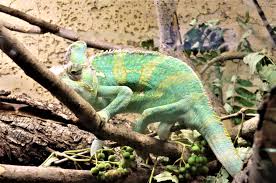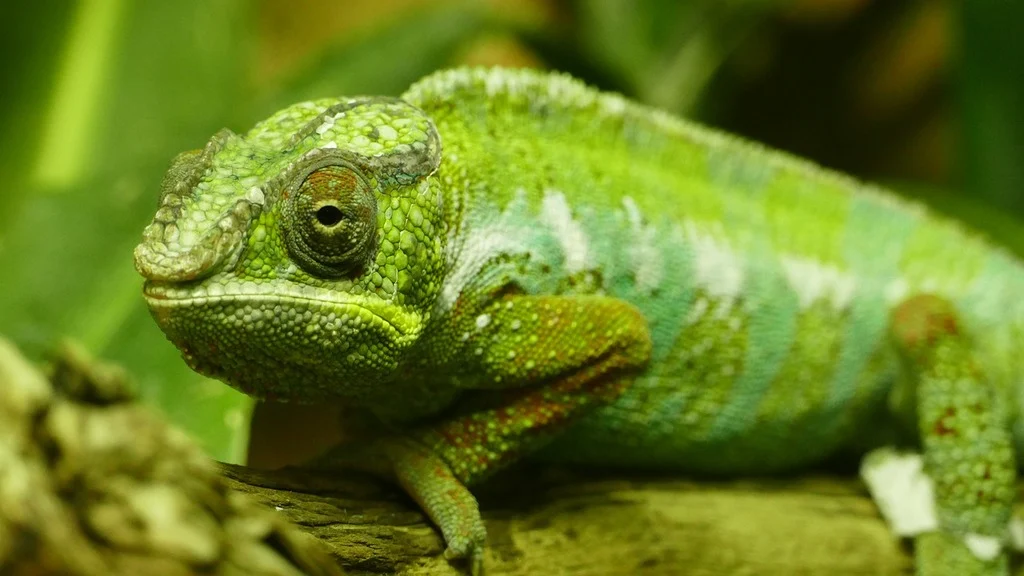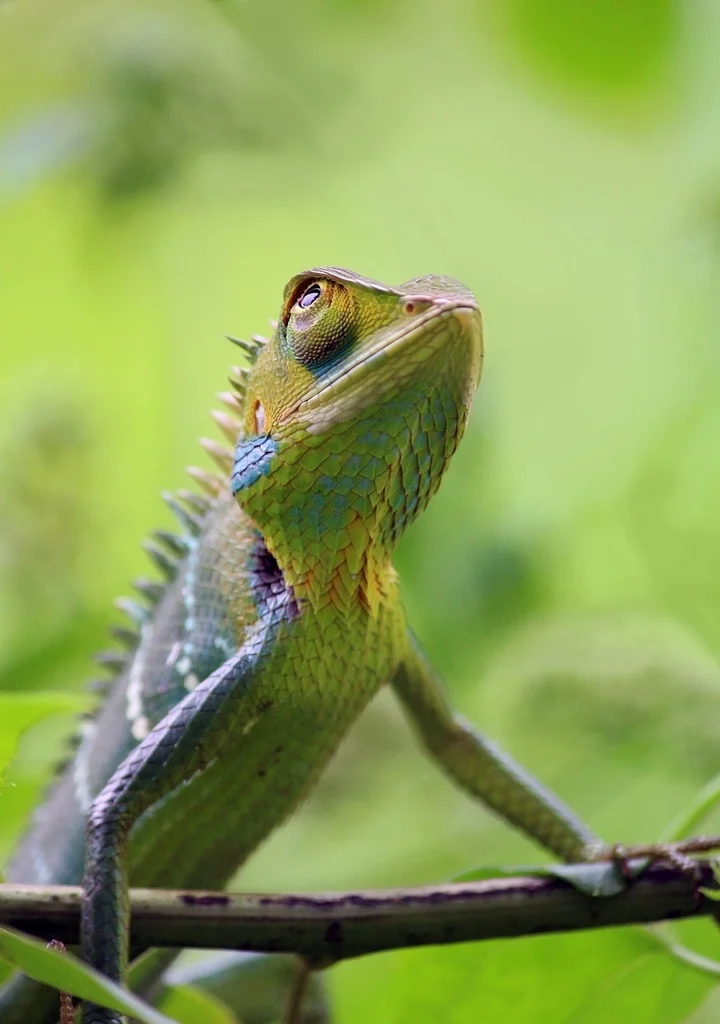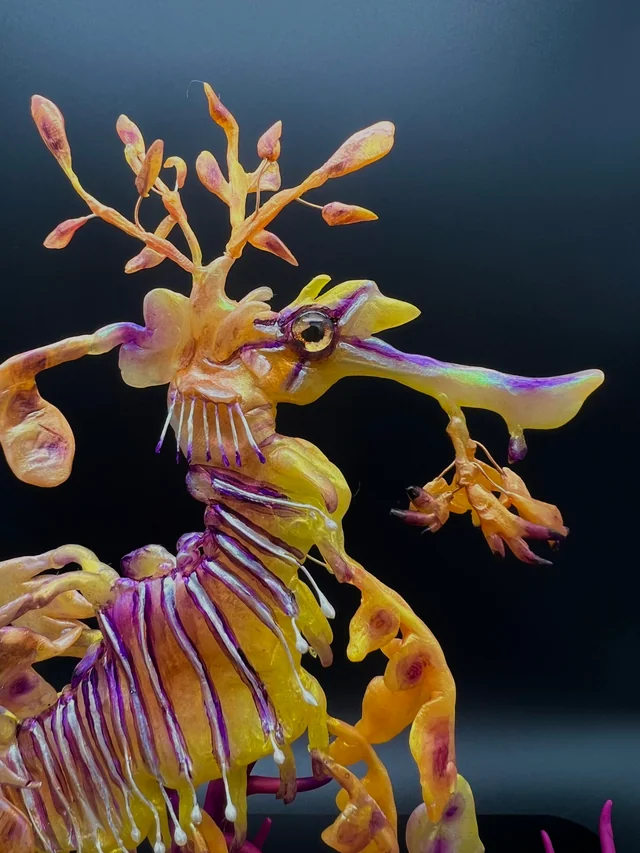Unique research Questions and Answers about Chameleons

Here are Unique research questions and answers about Chameleons which are a unique and highly specialized clade of Old World lizards.
They are approximately 200 species described as of June 2015 and members of this family are known for their unique range of colors and their ability to engage in color-changing camouflage.
A large number of species in this family show considerable variability in their ability to change color.
For some, it’s more of a change in brightness; for others, multiple color combinations can be seen, such as red, yellow, green, blue.
Characteristics of chameleons also include their jointed digits, prehensile tails, laterally compressed bodies, hoods, marble tongues for catching prey, a waddling gait, and in some species, crests or crests on their foreheads and noses.

wild animal chameleon-animals
Creator: pixabay.com
A chameleon’s eyes move independently, so the chameleon’s brain is constantly analyzing two independent, separate images of its environment.
When hunting prey, the eyes focus forward in a coordinated manner, providing the animal with stereoscopic vision.
This article will focus on some research questions and answers about chameleons
- Can chameleons give you disease?
Chameleons themselves are not known to transmit diseases to humans.
However, like all animals, they can carry bacteria such as salmonella, so it’s important to maintain good hygiene when handling them.
Wash your hands thoroughly after handling a chameleon or any other reptile or amphibian to reduce the risk of potential bacterial transmission.
- What is a chameleon called?
Chameleons are often called Old World lizards because they are native to Africa, Madagascar, and parts of the Middle East and southern Europe.
They belong to the family Chameleonidae, a group of reptiles characterized by the ability to change color, long tongues and unique eye movements.
Chameleons have adapted to their specific habitats and are known for their camouflage and specialized hunting techniques.
Therefore, the term “Old World Lizard” accurately describes the chameleon.
- What are the distinguishing characteristics of a chameleon?
The distinguishing feature of a chameleon is its ability to change color.

Chameleons are known for their excellent camouflage abilities, allowing them to blend into their surroundings and hide from predators.
This unique feature is achieved through specialized cells in the skin called chromatophores, which contain pigments that can expand or contract to produce different colors.
By adjusting the size and distribution of these pigments, chameleons can change their appearance in response to various environmental factors such as temperature, light and mood.
Most other animals don’t have this ability to change color, making it the chameleon’s defining characteristic.
- What class do chameleons come from?
Chameleons come from the “class Reptiles”. This is because alligators are reptiles, and Reptilia is the class that includes reptiles such as alligators, snakes, lizards, and turtles.
Reptiles are characterized by scaly skin, cold blood, and the ability to lay eggs on land. Alligators specifically belong to the order Crocodile in the class Reptiles.
They are large semi-aquatic reptiles found in freshwater habitats and are closely related to crocodiles.
- What’s so special about a chameleon’s feet?
A special feature of the chameleon’s feet is that they are zygodactyl.
This means they have two toes facing forward and two toes facing back, which allows them to firmly grip branches and other surfaces.
This unique foot structure helps chameleons easily adapt to their environment and climb.
- What is Stereoscopic vision (eyes)?
Stereoscopic vision is the ability to perceive depth and three-dimensional objects.
This is a special feature of their eyes because it gives them greater depth perception and accurate judgment of distances.
This is accomplished by the brain combining the slightly different images seen by each eye, resulting in a three-dimensional perception of the world.
Stereoscopic vision is particularly beneficial for activities such as hunting, as it helps accurately determine the distance and location of prey.
- How do chameleons change color?
Chameleons change color by using specialized cells called chromatophores that contain pigments.
These pigments are controlled by the chameleon’s nervous system and can expand or contract to produce different colors.
However, guanine crystals in their skin also play a role in the color change. These crystals reflect and scatter light, creating a rainbow of colors.
Therefore, the correct answer is “guanine crystal”.
- What is the use of color changes?
Color changes serve a variety of purposes, such as maintaining proper body temperature, communicating, expressing emotions, signaling impending death, and showing injuries.
This means an organism can change its color so that it doesn’t blend in with its surroundings, making it harder to survive.
Predators or prey detect them, but for many good reasons… This adaptation allows the organism to remain hidden and increases its chances of survival.
- How do chameleons catch flies?
They are known for their ability to change their skin color to blend in with their surroundings, which helps them camouflage and approach prey without being detected.
In addition, chameleons have a long, sticky tongue that they can quickly extend to catch flies and other insects.
Therefore, their capture mechanism involves a combination of camouflage, long sticky tongues, and colorful skin.
Are chameleons poisonous?
Chameleons are not poisonous to humans or animals. Whether you touch one or your cat accidentally hunts one outside, you don’t have to worry about any poisoning.
Chameleons are more likely to hide and change their body color to camouflage themselves than to harm others.
The biggest danger these small reptiles pose is when they feel threatened enough to attack. Still, biting or attacking is often a last resort for them to defend themselves.
If you notice they are running away or trying to hide, it’s best to back off and let them calm down until they feel safer.
Are chameleons poisonous to eat?
As we mentioned before, chameleons are non-venomous, even if other pets or reptiles accidentally eat them.
Because they are endangered, it is illegal to hunt them. Also, you shouldn’t eat chameleons in the first place because they may contain salmonella.
If your pet eats one, err on the side of caution and take the pet to the veterinarian just to be safe.
It’s best to keep an eye on your pet after eating a mystery food, no matter what it is.
Are chameleons dangerous?
Generally speaking, these reptiles are relatively low-risk pets.
The most serious injury is a bite, which is usually nothing to worry about. If they feel threatened and bite you, be sure to clean the area to prevent open wound infection.
If you want to stop it, limit your contact with them as much as possible and provide them with a safe and healthy environment to thrive.
Why do chameleons make good pets?
In fact, chameleons don’t make very good pets because they are probably the most vulnerable of lizards.
They rarely thrive in captivity unless under the care of experienced herpetologists and zoo keepers. Most chameleons become seriously ill and die suddenly without warning.
Finally, the chameleon is a “look, don’t touch” animal. They don’t like to be touched at all.
They are unlike other lizards such as green iguanas where you can get used to being touched by touching them as often as you like. young.
Chameleons are not used to this, and in fact, being touched makes them very nervous.
They also don’t like being watched all the time as it makes them nervous that they are being watched by predators.
- Does a chameleon bite hurt?
A chameleon won’t bite you unless you put your fingers in its open mouth.
When it bites you, it doesn’t really hurt you. It doesn’t have a powerful jaw – remember its prey is fairly small insects and it doesn’t take much bite pressure to kill them.
However, chameleons do have impressive defensive displays that deter at least some humans from disturbing them!
Where I grew up, it was believed that a chameleon bite could give you hepatitis, which of course could kill you.
This is an old wives’ tale with no evidence to back it up.
Chameleons are harmless and actually help control many potentially harmful insects.
Please do not pester them and let them fully play their ecological role that is beneficial to humans and the environment.
How many colors does a chameleon have?

Chameleons are known for their ability to change colors, but they don’t have a specific number of colors.
Instead, they have special cells in their skin called chromatophores that can change color by expanding or contracting.
This allows them to blend in with their surroundings or communicate with other chameleons.
So, rather than having a fixed number of colors, chameleons are able to display a variety of colors depending on their environment and mood.
What does a chameleon’s tongue look like?
A chameleon’s tongue is about twice as long as its body.
When a chameleon sees an insect that looks like a delicacy, it opens its sticky tongue so fast that the insect is completely caught off guard when it is caught.
According to a 2016 study, a chameleon’s tongue unfurls with lightning-fast recoil, thanks to the force of its tongue muscles.
Researchers analyzed dozens of high-speed videos of chameleons eating insects.
The tongue of Rhamholeon spinosus produces a peak acceleration 264 times greater than the acceleration due to gravity.
National Geographic explains that if it were a car, a chameleon’s tongue could accelerate from 0 to 60 mph (97 km/h) in just 1/100th of a second.
Are some chameleons are endangered
According to the IUCN Red List, many chameleon species are endangered.
Both Madagascar’s karuma orangutan and miraculous-nosed chameleon are critically endangered due to threats such as mining, logging and agricultural use of the land.
The Seychelles’ tiger chameleon, Tanzania’s giant Eastern Usambara sword-horned chameleon and Madagascar’s Deckari leaf chameleon are all endangered.
Other species, such as the shaded chameleon and the Mediterranean chameleon, are listed as least concern.
They don’t face many threats and their population is stable.









